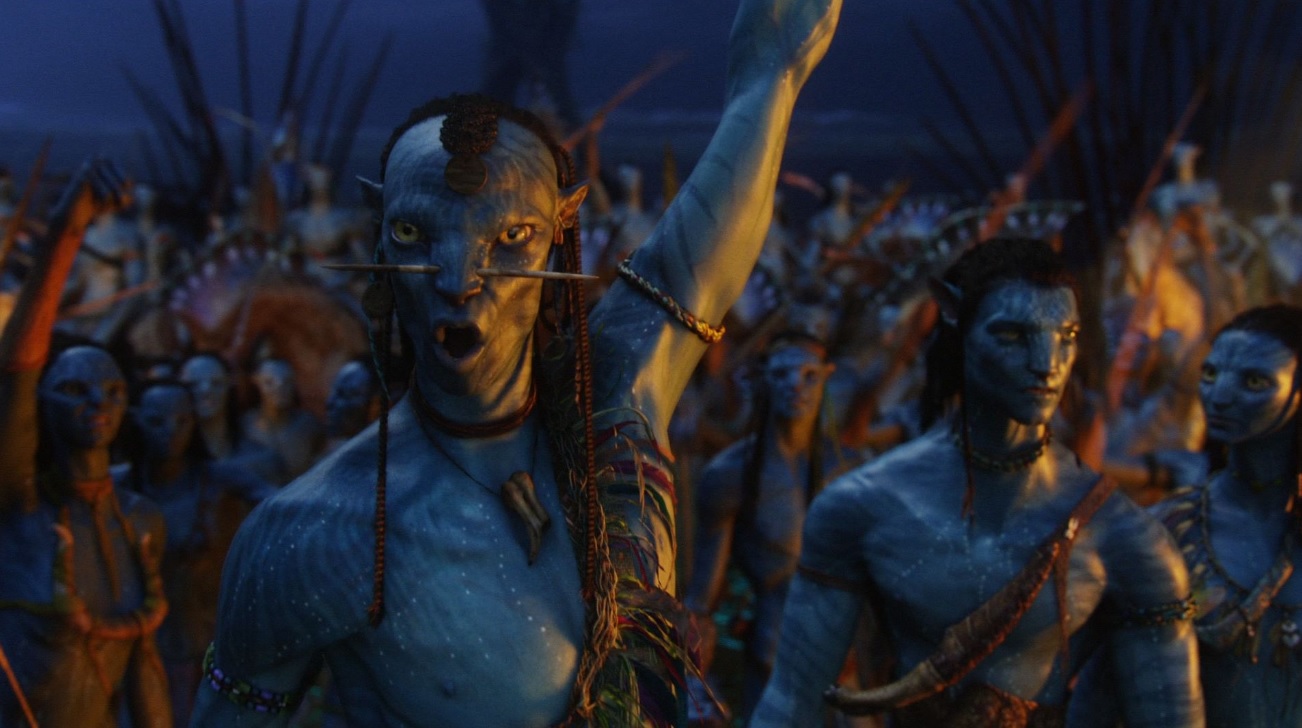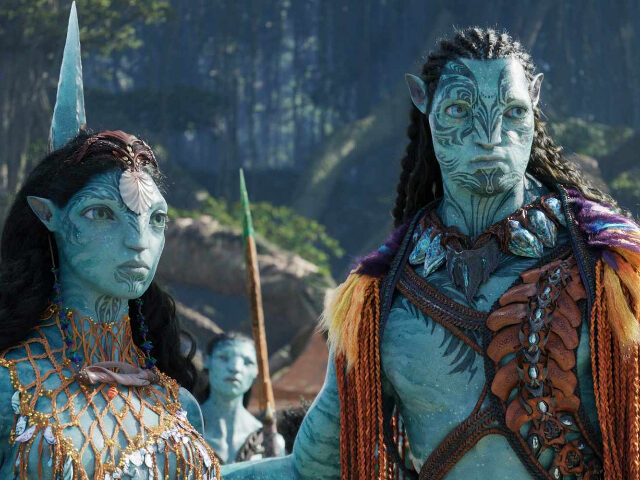Since Avatar: The Way of Water evoked many a great headline within me, I figured it best to just lay them out all at once…
May God Save Us from this Franchise
This Movie Desperately Needs Testosterone
I was Rooting for the Humans
The World’s Most Expensive Cartoon
Watch BBC’s The Blue Planet Instead
Shallow Family Values Cannot Save this Movie
The Emperor Has No Clothes
At Least Fern Gully Had Tim Curry
Need I go on…
It brings me no pleasure to write this, but I have a slight impression that the great James Cameron did not heed the lesson he imparted when he had Miles Bennett Dyson conceive of Skynet in his blockbuster masterpiece Terminator 2 — some frontiers truly are better left unexplored. Though I will likely find myself on the “wrong side of history” when Mr. Cameron collects his $8 billion check after unleashing Avatar 6 upon the masses in 2035, if I could have one wish for this franchise’s legacy, it would be that it proved forever and for always that even the most state-of-the-art Computer-Generated Imagery (CGI) coupled with top-of-the-line 3D projection make a poor substitute for raw, practical, in-camera effects projected onto a standard 2D screen at a traditional 24 frames per second.
If Avatar represents the future of cinema, then I have no shame in saying that I saw the future at 3 p.m. on Thursday at the Regal United Artists theater in La Cañada, ladies and gentlemen…
And the future sucks.
Watch below:
Before I get to the paper-thin story that can best be described as Free Willy meets Dances with Wolves in Space, let me first address the litany of sycophantic headlines hailing this movie as a “visual masterpiece,” a “mind-boggling spectacle,” or an “immersive experience” – slogans that will soon become the clubs by which the fevered Avatar fanbase will bludgeon into submission those of us who dare to say “the emperor has no clothes” after enduring three hours of this lifeless, emotionless $250 million cartoon. The hype machine may have worked in 2009 but in 2022, the year in which we saw Tom Cruise go flat-faced while flying a real jet at real speeds in a real cockpit, we stick-in-the-mud traditionalists finally have a case to make after a decade of the China-approved assembly-line schlock that the original Avatar spawned. Make no mistake, Avatar: The Way of Water offers some of the worst visuals of James Cameron’s accomplished career, therefore making it the worst movie of James Cameron’s accomplished career. He does nothing he did not already do (better and with far fewer resources) and he presents nothing of genuine marvel.
With the Avatar series, Cameron set out to create a world entirely from computers, pushing the boundaries of 3D technology past the breaking point to create CGI images so photo-realistic that the viewer can’t tell the difference. While Cameron certainly achieves this feat through the environments of his alien planet Pandora, from its lush green forests to its opulent oceanic reefs, he fails to achieve this where it matters most, where movies become movies: the action and the characters.
Throughout all three hours of Avatar: The Way of Water, not once did the CGI illusion ever give way to a tangible reality. Not once did I ever feel transported to a “new world,” and, most especially, not once did Cameron’s beloved Na’Vi alien species come across as flesh and blood characters as opposed to weightless cartoons rendered by actors in motion-capture suits on a comfortable sound stage. The bottom line: you can only conjure up so many images out of thin air before the eye notices the trickery at work and the uncanny valley supplants reality. Try as Cameron may, a CGI whaling vessel sinking into the ocean (as seen in Avatar: The Way of Water) will always be inferior to a full-scale model of the Titanic constructed by human hands breaking apart in front of a 35mm camera. Weight, gravity, stress, dimension, limitations, structure all bring something to an image that just cannot be recreated in the non-existent world of cyberspace.
20th Century Studios.
Now, some of this could be forgiven if perhaps James Cameron offered more depth and dimension to his CGI creations beyond the mere surface. For instance, Peter Jackson’s Gollum in the Lord of the Rings trilogy manages to rise above this uncanny valley effect due to the character’s textured, multi-layered pathos as presented through dialogue and facial expressions that directly impact the emotions of those he interacts with. Avatar: The Way of Water offers no such depth, rendering it impossible to conjure even the slightest level of sympathy for its characters.
I went into Avatar: The Way of Water giving James Cameron the benefit of the doubt, hoping above all else that he learned the right lessons from the 2009 original and would give us a new and improved story with deeper themes and richer characters. My hopes were fruitless. Yes, this is Dances with Wolves in Space Part II with the same on-the-nose, subtle-as-a-Joel-Osteen-smile-on-Sunday anti-colonial, anti-military, anti-technology, anti-human, and anti-industry messaging as the first film, with the only difference being that Cameron traded out Fern Gully for Free Willy as a source of inspiration this time around.
The film kicks off several years after the events of the first film. Jake Sully (Sam Worthington) has fully adapted to his Na’Vi Avatar on the alien planet of Pandora and now spends his days raising a family alongside his mate Neytiri (Zoe Saldana). Together, they have five kids, one of which is adopted and looks like a teenage Sigourney Weaver (the film’s worst character by a mile). All is going well until the human baddies show up again and start burning down forests just because and pillaging resources for no exact reason and killing super-intelligent whales for some super-powerful ooze inside them that reverses aging or something. Echoing the “nobody is ever really gone” trope from Disney’s Star Wars, Stephen Lang’s Miles Quaritch comes back from the dead, only this time he has an Avatar of his own, and he’s out to get revenge on Jake Sully. A few whales get killed and a big fight happens out in the water and some people die and that about sums up the plot of this three-hour movie.

20th Century Studios
For Avatar to work, you have to care about the Na’Vi but as presented by Cameron, the Na’Vi simply are not worth caring about because they are not a real species in any sense of the word: physically, emotionally, philosophically. They are simply too perfect, too harmonious, and too innocent to ever come across as believable. You could kill a thousand of them and burn all of their villages and I wouldn’t bat an eyelash because they are simply figments of Cameron’s imagination — his warped, childish take on the “noble savage.”
The story also flounders from Jake Sully’s complete lack of conflict over the fact that he abandoned his human body for an alien clone vessel and never looked back. Does he ever miss life as a human? Does he feel guilty about killing his own kind? Does he miss earth? Does he miss his family back on earth, for that matter? Such basic questions of existence never arise in him and Cameron just expects us to believe that living as a Na’Vi on Pandora offers such great rewards that a man can literally transfer his consciousness into an originless science experiment and never once wrestle with the weight of that decision.
If one positive could be said about the film, it’s that Cameron largely steers clear of the more incendiary woke traps that other blockbusters are prone to these days. No LGBTQ propaganda rears its ugly head and the movie does offer a firm defense of the nuclear family, especially in its regard for fathers as protectors. That said, the family dynamic never rises above surface-level melodrama and the children never match the parents in terms of charisma or personality. Some conservatives might be quick to latch onto the film’s “family values,” but nice sentiments about fatherhood cannot save this trainwreck of a movie.
As for the 3D… Well, let me just say that during the screening, I took my glasses off for a time to compare and contrast the crisp 3D with the blurry 2D, and honestly, the 2D images felt more immersive and up close while the 3D images felt flat, small, and distant. Part of this stems from the fact that 3D destroys the harmony between the three planes of a given shot’s mise en scène: foreground, midground, and background. The midground appears the sharpest but the foreground appears almost like a transparent hologram while the background succumbs to a synthetic blur. I wish James Cameron had put all his eggs in advancing IMAX technology, as Christopher Nolan did, instead of 3D. I suppose he advanced the technology to new horizons, but I sure as hell sensed none of it.
I have little doubt that Avatar: The Way of Water will make gobs of money and thus further solidify James Cameron’s (not undeserving) status as “King of the World,” which means we could expect plenty more of these films for years to come.

COMMENTS
Please let us know if you're having issues with commenting.